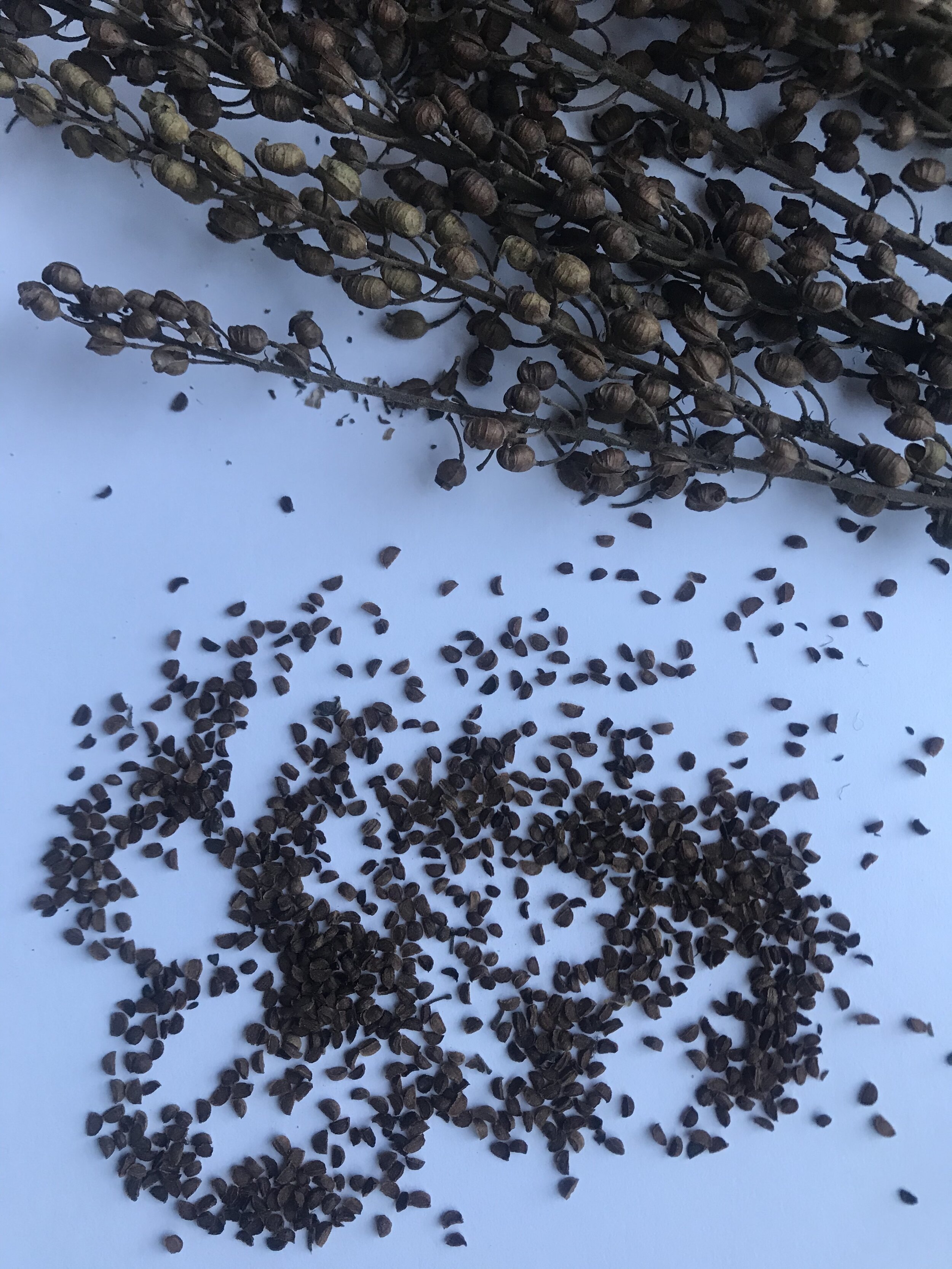Cimicifuga racemosa
Black Cohosh is a beautiful, hardy, long lived perennial that has been used by humans for hundreds of years. The binomial name has been shifting around, and is currently landed on the Actaea genus. Like another native woodlander, Actaea pachypoda, or Doll’s eyes which has similar leaves and flower. Native to Northeastern America, Cohosh was used by the native people as a female tonic. The presence of phytoestrogens has verified its usefulness in treating menopausal symptoms and an internet search will bring up pages advertising pills and supplements. The plant is just as intriguing to horticulturists because of its reliable architectural presence in the partially shaded, woodland garden. Flowering late, the strong, clumping plant grows slowly through the summer with divided, segmented leaves. In August, or later, it sends up a spike with beautiful, white racemes of bottle brush flowers that are a magnet for pollinators. The smell is exotic, perfumey, and slightly musky and the odor hangs on the warm evening air. The smell inspired the common name Bugbane, as the smell repels someinsects. Even the binomial name Cimicifuga references this, meaning ‘bed bug repeller’. To further the horticultural interest there is a whole group of purple leaved cultivars with names like ‘Hillside Black Beauty’ and ‘Black Negligee’. These plants are more tolerant of full sun which brings out the color. Cohosh is difficult to propagate from seeds and are slow to germinate, sometimes needing several years to come up. The slow growing cultivars are mostly propagated by division, taking several years to divide up. A trait, however, that makes it an excellent garden plant. I have been experimenting with seeds for a few years now, without much (any!) luck yet. In the summer of 2020, however, I found a good source of a green Cohosh plant in a friend’s yard. I gathered fresh seeds in the fall, and also found a few seedlings nearby. I seeded several trays using some different stratification methods. I’ll let you know. It look forward to learning how to propagate this important and beautiful plant.

Young racemes of inflorescence.

The spectacular bottlebrush flowers are a magnet for pollinators and predatory wasps.

A young seedling maybe 2-3 years old. This long lived plant takes several years to flower.

The stems make some nice winter interest.

Black cohosh seeds and dried flower pods. Gathered from a friend's garden in fall of 2020

